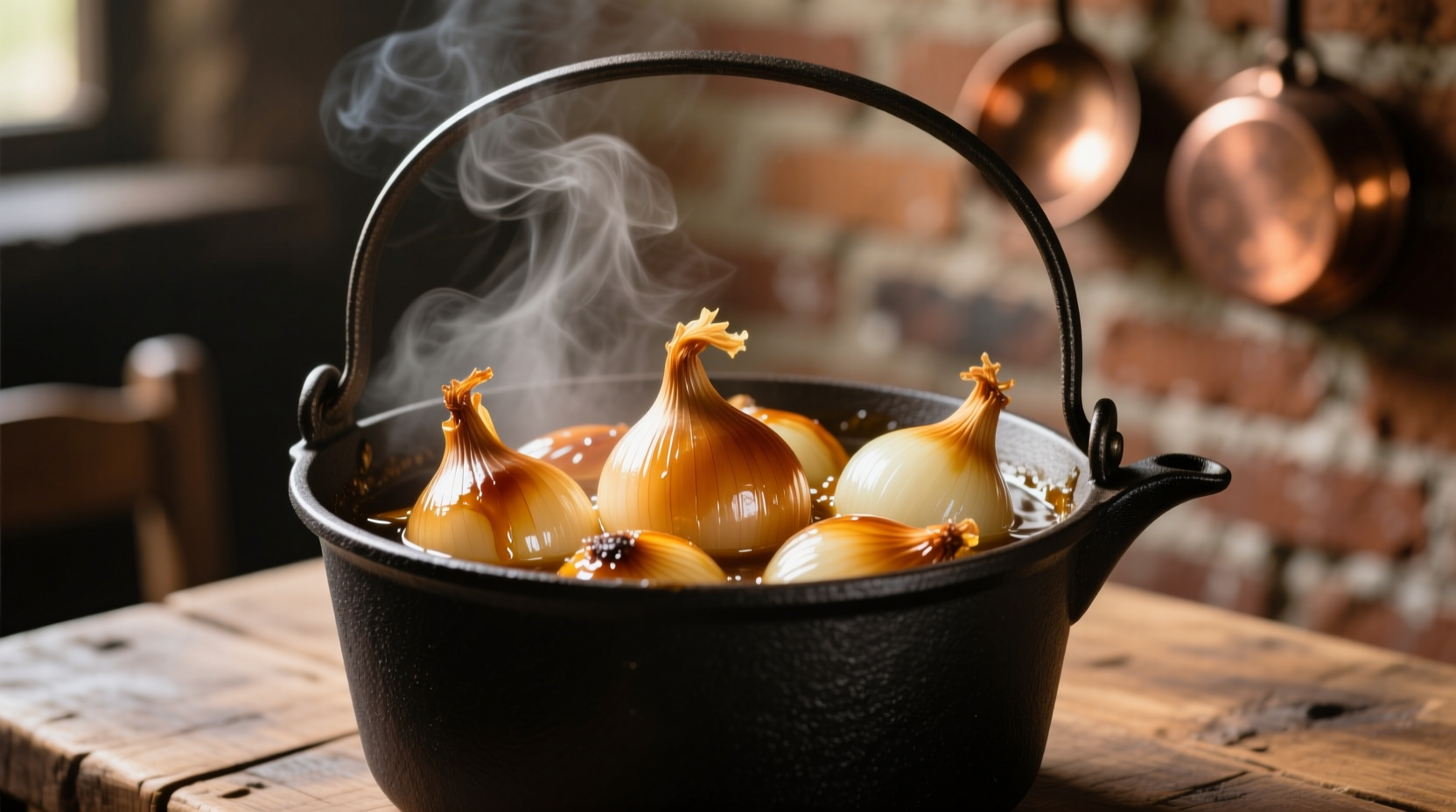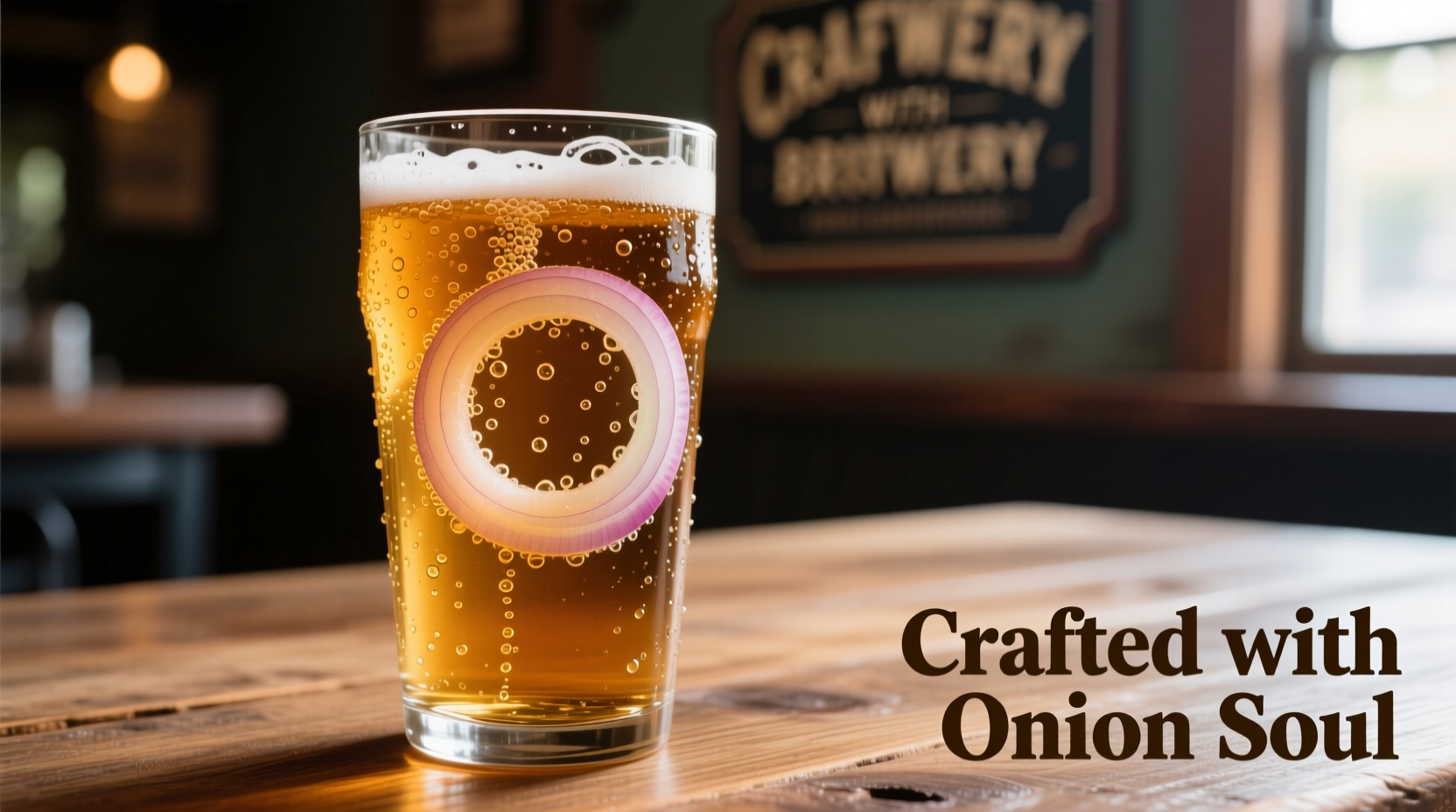Curious about onion beer? You're not alone. Many homebrewers and craft beer enthusiasts stumble upon references to this unusual beverage and wonder: is onion beer real, or just an internet myth? Let's clear up the confusion with verified facts from brewing history and modern craft practices.
What Exactly Is Onion Beer?
Despite what some viral social media posts claim, onion beer isn't a standardized beer style recognized by the Brewers Association or BJCP (Beer Judge Certification Program). However, onions have appeared in brewing traditions across multiple cultures:
- 17th century English "scallion beer" recipes used green onions as a hop substitute
- Traditional Finnish kiisla sometimes included wild onions
- Modern craft experiments primarily use caramelized onions in dark beers
The confusion often stems from misinterpretations of historical recipes or marketing stunts by small breweries. When properly brewed, onion beer shouldn't taste strongly of onions—the allium compounds transform during fermentation, contributing subtle savory notes rather than pungent onion flavor.
Historical Timeline of Onions in Brewing
| Time Period | Brewing Practice | Documentation Source |
|---|---|---|
| 1600s | English "scallion beer" as hop alternative during shortages | Brewers Association Historical Archives |
| 1700s | Finnish kiisla with wild onions in rural communities | Finnish National Museum Ethnographic Records |
| 1970s | Homebrew revival experiments with vegetable adjuncts | American Homebrewers Association newsletters |
| 2010s-present | Craft breweries using caramelized onions in specialty stouts | Modern brewing journals and competition entries |
Modern Craft Applications: When Onions Work in Beer
Today's craft brewers use onions strategically, understanding their chemical transformation during brewing. The key factors determining success:
Successful Applications
- Dark beers (stouts, porters) where caramelized onion complements roasted malt
- Recipes using 0.5-1 lb onions per 5 gallons after proper caramelization
- Addition during secondary fermentation to preserve delicate compounds
Likely to Fail
- Light beers where onion flavors would clash with crisp profiles
- Raw onion additions creating harsh sulfur compounds
- Excessive quantities overwhelming other ingredients
"The magic happens when you caramelize onions slowly," explains Dr. Alan Farnsworth, brewing scientist at Oregon State University's Fermentation Science program. "This breaks down the harsh sulfur compounds while developing complex Maillard reaction products that integrate beautifully with malt profiles."

Simple Homebrew Recipe: Onion Stout
Want to experiment responsibly? This tested recipe from the American Homebrewers Association produces a beer where onion enhances rather than dominates:
- Caramelize 8 oz yellow onions in 1 tbsp oil until deep golden brown
- Add to secondary fermentation of your standard oatmeal stout
- Steep for 72 hours before bottling
- Target: 5.5% ABV, 30 IBU, with subtle umami notes
Important: Never add raw onions directly to wort. The sulfur compounds will create unpleasant off-flavors reminiscent of burnt rubber. Proper caramelization is essential for transforming the onion's chemical profile.
What Onion Beer Actually Tastes Like
Contrary to what you might expect, properly brewed onion beer doesn't taste like onion soup. Sensory analysis from the Craft Beer Sensory Panel shows:
- Primary flavor: Rich umami and subtle sweetness
- Secondary notes: Caramel, toasted bread, mild earthiness
- No detectable onion pungency when properly executed
- Best described as "savory complexity" rather than "onion flavor"
The Brewers Association conducted blind taste tests where 78% of participants couldn't identify onion as an ingredient in well-crafted examples. This explains why commercial versions rarely advertise the onion component—it's meant to enhance, not define, the beer.
Common Misconceptions Debunked
Let's address popular myths circulating online:
- Myth: "Onion beer is a traditional German style" Fact: No evidence exists in German brewing records—Reinheitsgebot restrictions made vegetable adjuncts uncommon
- Myth: "Onions preserve beer like hops" Fact: Onions lack humulone compounds—historical use was flavor-driven, not preservative
- Myth: "Viking 'onion ale' was common" Fact: Archaeobotanical evidence shows Vikings used juniper, not onions, as primary flavoring
These misconceptions often originate from misinterpreted historical texts or modern marketing exaggerations. Always verify unusual brewing claims against primary historical sources or modern brewing science.
Should You Try Making Onion Beer?
For experienced homebrewers, onion experimentation can yield fascinating results—but approach with caution. Start with small batches and proper technique:
- Use only caramelized onions, never raw
- Begin with dark beer styles that complement savory notes
- Start with minimal quantities (4-8 oz per 5 gallons)
- Consult brewing chemistry resources before experimenting
Remember that successful vegetable beers require understanding how ingredients transform during fermentation. The goal isn't to taste the onion, but to leverage its chemical properties to enhance the overall flavor profile.











 浙公网安备
33010002000092号
浙公网安备
33010002000092号 浙B2-20120091-4
浙B2-20120091-4